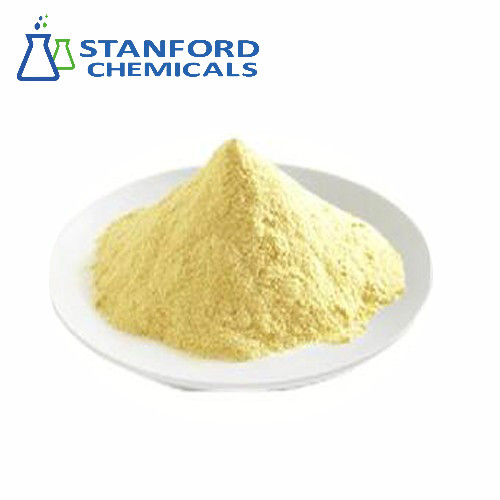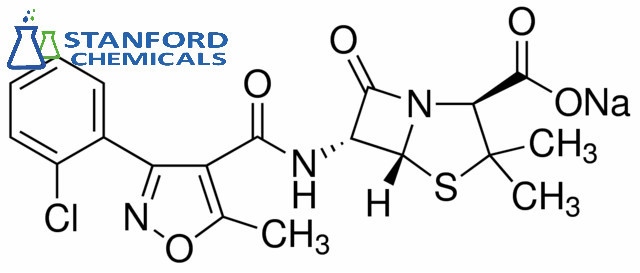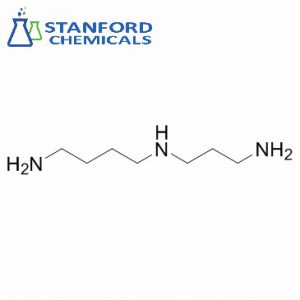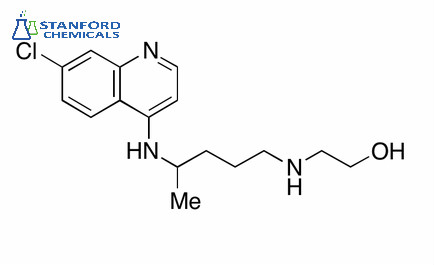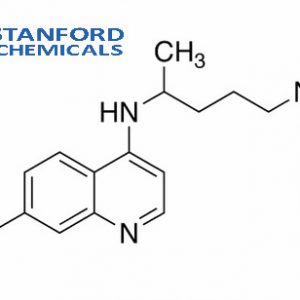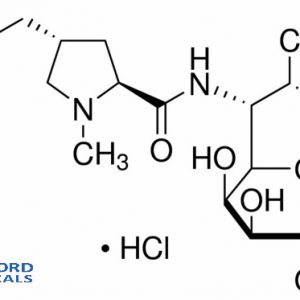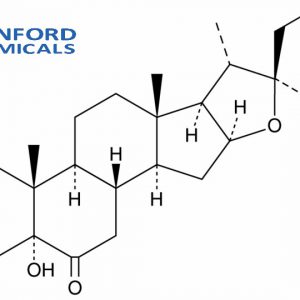- Home
- Pharmaceuticals
- 040-000-369 7-Ethyl-10-hydroxycamptothecin
040-000-369 7-Ethyl-10-hydroxycamptothecin
| Synonyms | SN-38 |
| Type | API |
| Source | Synthesis |
| Key words | topoisomerase-I inhibitory, interfere with DNA synthesis |
| Related products | 10-Hydroxycamptothecin |
- Description
Description
7-Ethyl-10-hydroxycamptothecin Specifications:
| Product Name | 7-Ethyl-10-hydroxycamptothecin |
| CAS Registry Number | 86639-52-3 |
| Molecular Formula | C22H20N2O5 |
| Molecular Weight | 392.41 |
| Purity | 98%min |
| Appearance | White to Yellow to Green powder to crystal |
| Package | 1kg-25kg, 1-100g |
| Storage | Store and seal. |
| Shelf life | 2 Years after rightly stored |
| Functions | topoisomerase-I inhibitory |
7-Ethyl-10-hydroxycamptothecin Description:
7-ethyl-10-hydroxycamptothecin (SN 38) is a liposomal formulation of the active metabolite of Irinotecan [DB00762], a chemotherapeutic pro-drug approved for the treatment of advanced colorectal cancer. SN 38 has been used in trials studying the treatment of Cancer, Advanced Solid Tumors, Small Cell Lung Cancer, Metastatic Colorectal Cancer, and Triple Negative Breast Cancer, among others.
7-Ethyl-10-hydroxycamptothecin Applications:
7-Ethyl-10-hydroxycamptothecin (SN-38) is a water-insoluble biologically active metabolite of water-soluble irinotecan hydrochloride (CPT-11) [I0714]. SN-38 has a topoisomerase-I inhibitory activity and is approximately 100-1000-fold more cytotoxic in vitro than CPT-11. Camptothecin and its derivatives interfere with DNA synthesis by inhibiting the enzyme topoisomerase-I. In order to prevent and correct topological problems caused by the DNA double helix, topoisomerase-I catalyzes the relaxation of negatively supercoiled DNA, the knotting and unknotting DNA, and the linking complementary rings of single-stranded DNA into double-stranded rings. Then the inhibition action induces breaks in single-strand DNA. Eventually, this leads to double-strand DNA breaks and apoptosis or cell death. Recently, the use of polyethylene glycolsylated nanographene oxide for drug delivery of SN-38 has received widespread attention. (The product is for research purposes only.)

